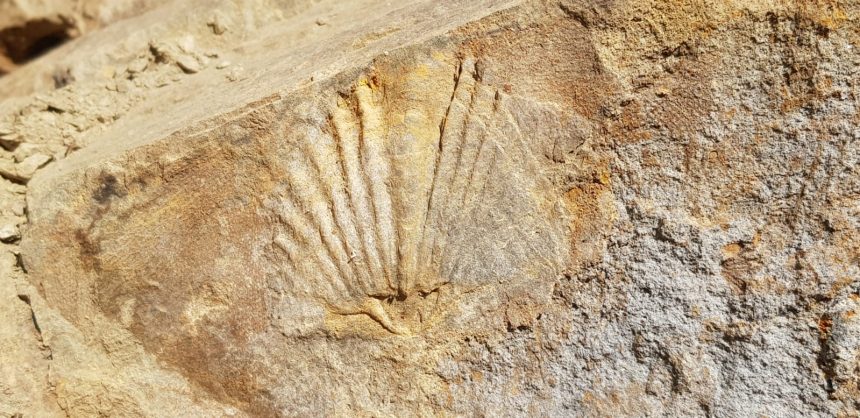Anantnag, Nov 15: Three lecturers from South Kashmir have unearthed a potential fossil site at the popular tourist destination, Sinthan Top. Believed to be as old as 350-400 million years, the site promises to be a treasure trove for paleontological research.
The findings, made by lecturers Manzoor Javaid, Rouf Hamza, and Mohammad Yousuf Ganie, adds to their repertoire of fossil finds over the last two decades.
“We’ve been identifying fossil sites for nearly 20 years and have discovered nine so far,” said Manzoor Javaid. “Today, we identified 4-5 more sites in the Daksum area, stretching from Daksum to Sinthan Top.”
He said that these fossil sites have a lot of significance, calling them “very rich” and estimating their age at 325 to 400 million years. “They hold immense scientific value and could serve as vital subjects for paleontologists and geologists,” he said.
Rouf Hamza said the area has abundance of fossils, particularly Bryozoans, Brachiopods, and Bivalves, plant fossils and some are yet to be identified. “This is likely a Paleozoic site, approximately 400-200 million years old,” he said. “Brachiopods, with their distinct butterfly-like structure and a central sulcus, are particularly notable here. These fossils are bilaterally symmetrical, which makes them easier to identify.”
The lecturers have previously uncovered fossil sites in Anantnag and Kulgam, including the Aharbal area.
Rouf said that besides their geotourism potential, these fossils have tremendous evolutionary significance. “They are mostly sea animals, which supports the view that the whole of J&K was covered by a sea in ancient times.”
Mohammad Yousuf Ganie recalled his early fascination with fossils. “As a school student, I believed fossils were buried deep underground and required excavation. Today, we can see fossils embedded in exposed stones,” he said.
He said that these sites have academic potential. “Students no longer need to go anywhere to study fossils. This site could become a significant resource for local and international researchers. Besides, these sites are having a great potential from a tourism point of view, they added.
The lecturers hope the findings will garner attention from scientific communities and authorities to preserve and explore the site further.









